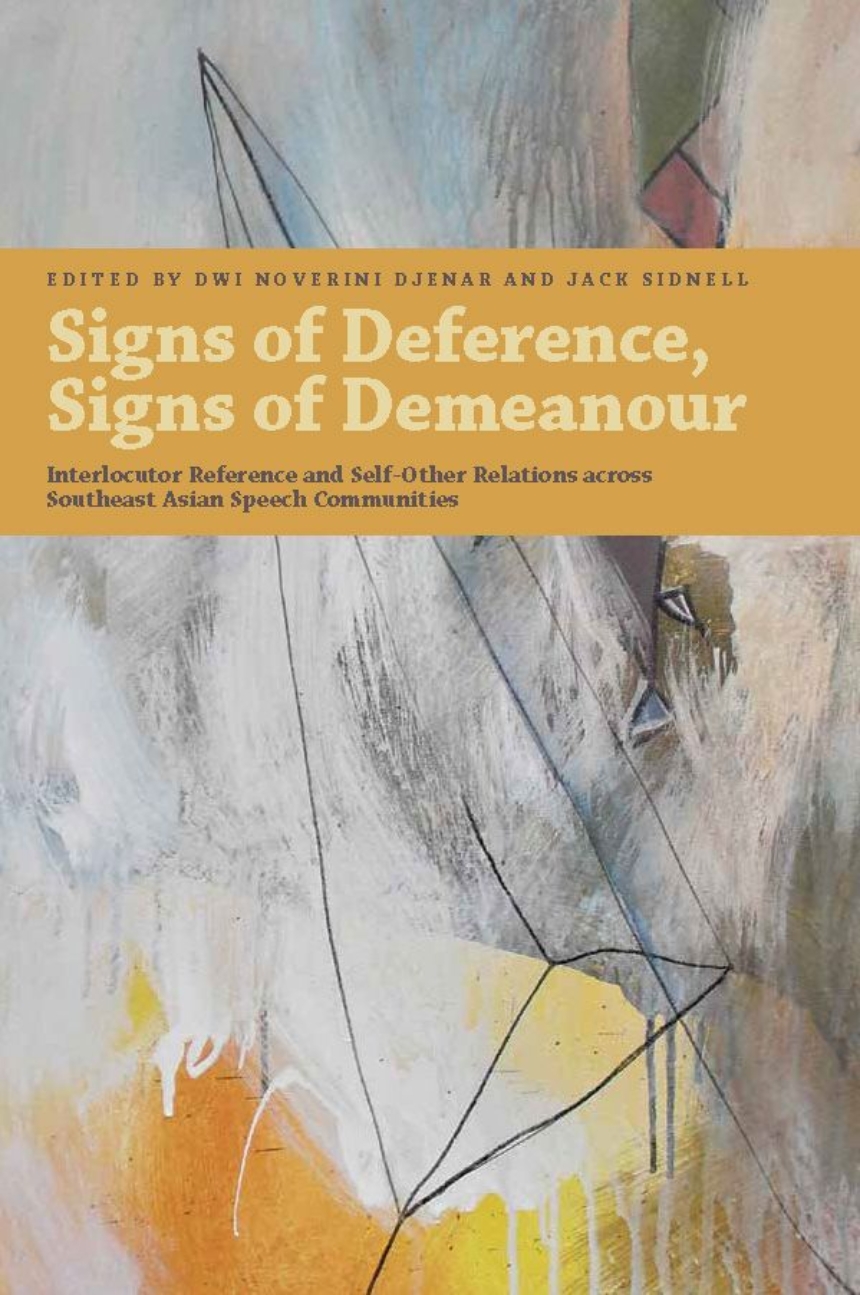National University of Singapore Press
Signs of Deference, Signs of Demeanour
Interlocutor Reference and Self-Other Relations across Southeast Asian Speech Communities
Distributed for National University of Singapore Press
Signs of Deference, Signs of Demeanour
Interlocutor Reference and Self-Other Relations across Southeast Asian Speech Communities
A study of interlocutor reference that significantly deepens our understanding of the ways in which self-other relations are linguistically mediated in social interaction, based on the analysis of Southeast Asian languages.
Terms used by speakers to refer to themselves and their interlocutors form one of the ways that language expresses, defines, and creates a field for working out social relations. Because this field of study in sociolinguistics historically has focused on Indo-European languages, it has tended to dwell on references to the addressee—for example, the choice between tu and vous when addressing someone in French. This book uses the study of Southeast Asian languages to theorize interlocutor reference more broadly, significantly deepening our understanding of the ways in which self-other relations are linguistically mediated in social interaction. As the authors explain, Southeast Asian systems exceed in complexity and nuance the well-described cases of Europe in two basic ways. First, in many languages of Southeast Asia, a speaker must select an appropriate reference form not only for other/addressee but also for self/speaker. Second, in these languages, in addition to pronouns, speakers draw upon a range of common and proper nouns including names, kin terms, and titles, in referring to themselves and the addressee. Acts of interlocutor reference, therefore, inevitably do more than simply identify the speaker and addressee; they also convey information about the proposed relation between interlocutors. Bringing together studies from both small-scale and large, urbanized communities across Mainland and Insular Southeast Asia, this is an important contribution to the regional linguistic and anthropological literature.
288 pages | 10 figures | 7 1/4 x 9 1/4 | © 2022
Anthropology: Cultural and Social Anthropology
Language and Linguistics: Anthropological/Sociological Aspects of Language, Pragmatics and Sociolinguistics
Reviews
Table of Contents
Part 1: Systems
Asymmetries in the System of Person Reference in Kri, a Language of Upland Laos
Speaking of People in South-Central Java
Part 2: Practices
Vocatives in Javanese Conversation
New Patterns, New Practices: Exploring the Use of English Pronouns I and you in Asymmetrical Relations in Kuala Lumpur (KL) Malay Talk
Part 3: Intimacies
“Respect those above, yield to those below”: Civility and social hierarchy in Vietnamese interlocutor reference
“Friends who don’t throw each other away”: Friendship, pronouns, and relations on the edge in Luang Prabang, Laos
Interlocutor reference and deferential relations in Indonesian broadcast talk
Part 4: Theories
Interlocutor reference and the complexity of East and Southeast Asian honorific registers

